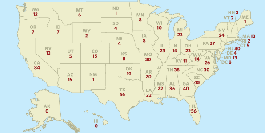The Redress Movement and Reparations Activism:
The Virtual Rosewood Project and Social Justice
Knowledge that the capitalist nature of American society results in structural inequalities has become a prominent focus among reparations activists. What is meant by structural inequality? It is not the same as the face-to-face, interpersonal violence common during the nineteenth and early twentieth centuries. As overt bigotry gave way, US racial inequality became embedded in social institutions, such as higher education. While elite US citizens began shedding their racist attitudes towards minorities during this time, social pressures and institutional inertia resulted in a society of racism without racists (Bonilla-Silva 2006). In this way, it became increasingly difficult to point out overt racism, and yet disenfranchisement of minority groups continued, resulting in a growing gap between Whites and minorities in regards to acces to education, health, jobs, and so forth. For a more detailed discussion of how inequality remains entrenched in higher education, see this blog post on the production of knowledge at UF.
While many acknowledge that current racial inequalities for African Americans derive from slavery, increasing numbers are fighting for Jim Crow reparations. This position developed because arguments for slavery reparations remain difficult to justify in public discourse, and successful cases for Jim Crow redress are growing. Rosewood is one such case, and the architects of the 1994 Rosewood Compensation Bill framed it as a personal claims suit against the state, distancing themselves from the terminology of reparations. This bill paid significant sums to survivors, variable amounts to descendants, and set up a minority scholarship. This successful example of redress drew on the 1980 Supreme Court order to pay $122 million to Sioux tribes for an 1877 treaty violation and the 1988 $1.25 billion compensation to Japanese Americans for unlawful internment.
At present, activists are urging the federal government to develop a redress commission to investigate the legacy of structural inequality in America. A variety of tactics are being explored and recently the need to educate the US public about redress is motivating groups like the National Coalition of Blacks for Reparations in America (N’COBRA), Black Radical Congress (BRC), and the TransAfrica Forum to step up education efforts.

